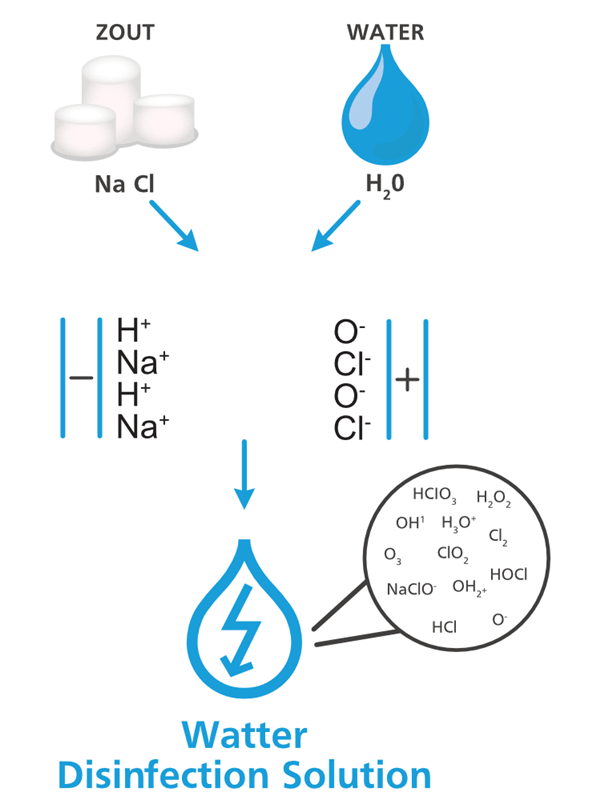Electrolysis is the key to sustainable disinfection
At Watter, constant innovation is key and an emphasis is placed on sustainability. For example, Watter uses electrolysis of water and salt to make disinfectant, a way in which Watter is very unique. Electrolysis of water is a process in which water is split into oxygen and hydrogen gas using electricity. This process has many applications and, according to Watter, is the key to the future of sustainable disinfection.

Hydrogen peroxide
Hydrogen peroxide is a widely used disinfectant, but it has limitations due to its required concentration and potentially harmful by-products. Hypochlorous acid (HOCl), on the other hand, is a promising alternative. HOCl is a natural disinfectant produced by our own immune system that is effective against a wide range of microorganisms, including bacteria, yeasts, viruses and fungi.
Electrolysis and HOCl
HOCl can be produced by electrolysis of water using a specially designed electrolysis device. A good example of this is the Watter system. This device uses a mixture of water and salt, which is then electrolysed to produce HOCl. This process is sustainable and safe, as no harmful by-products are produced and it can be used as a safe alternative to traditional chemical disinfectants.
Applications
HOCl can be used for disinfection in many different applications, including food processing, hospitals, and process water. It can be used to disinfect surfaces, utensils and water. Furthermore, it can also be used for personal hygiene, such as hand disinfectant.
Advantages
Using electrolysis to produce HOCl for disinfection has many advantages. For instance, HOCl is durable and safe. It also creates few hazardous by-products so it is not harmful to workers or consumers. In addition, it is also sustainable because no plastic waste is produced such as the packaging of the chemicals. And because the machine is on site, there is also no transportation, so no emissions. Moreover, electrolysis of water can be powered by renewable energy sources, such as solar or wind power, so it can play an important role in the transition to a sustainable society.
Conclusion
In conclusion, electrolysis of water is the future of disinfection and HOCl is a promising alternative to traditional chemical disinfectants. By using renewable energy sources to power water electrolysis, we can create a safe, sustainable and effective way of disinfection that protects people's health and the environment.
Get in touch with Watter and see what's possible for you!
Would you also like sustainable disinfection?



